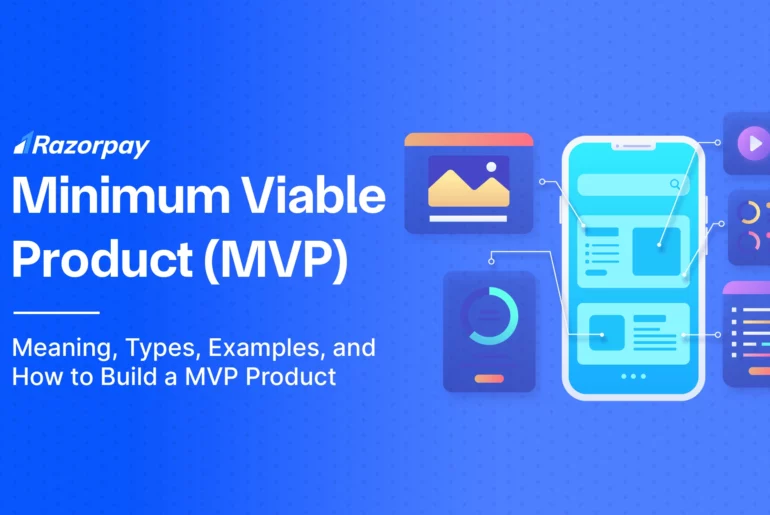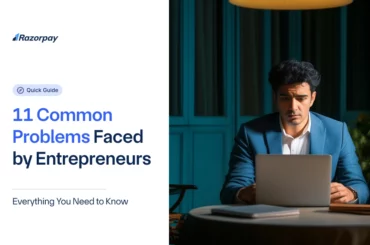Table of Contents
What is Minimum Viable Product (MVP)?
An MVP stands for minimum viable product, is an early basic version of a product released with enough features to be functional. MVPs can be a landing page or prototype (typically a piece of technology or computer program). Early customers of a business can use the MVP and provide feedback for product development in the future.
The company does this to validate a product idea early in the development cycle. This approach helps businesses validate demand before investing heavily in full-scale development. The goal is to provide immediate value, minimise development costs, and gather user feedback for future product enhancements.
What an MVP is Not?
A minimum viable product is often misunderstood. It is not just a basic prototype or a finished product. Also, an MVP isn’t the final version of the product, which would have many more features and be polished based on what users say. An MVP is made to address its users’ main needs and start quickly while also learning about the market’s response to the product. It is the first step that helps shape the full development of the product.
Minimum Viable Product Examples
Let’s have a quick look at some examples to understand how MPV is being practised in real life!
1. Airbnb
Today, whom we call the founders of Airbnb, once faced a hard time when they had to accommodate guests coming over for a conference. All the hotels in the city were full and there they discovered Airbnb! The idea was to host the guests in their own apartments on ‘air’ beds.
They Began by renting out personal apartments, validating the concept before scaling the service.
2. Foursquare
Foursquare is a pioneering location-based social networking platform that enables users to explore and share insights about various venues. It revolutionised the way people interact with their surroundings, offering a dynamic interface for discovering businesses and attractions and fostering community engagement through shared experiences.
Foursquare began with a single feature: checking in at locations. This minimalist approach rapidly attracted users, generating valuable feedback to grow the platform.
3. Amazon
Initially founded as an online bookstore in 1994, Amazon has evolved into a global e-commerce behemoth. The core proposition of offering books at competitive prices has remained consistent, while the platform’s feature set and product range have expanded exponentially. Amazon’s inception as a focused online bookstore serves as a prime example of an MVP strategy that scaled into a vast enterprise.
4. Instagram
When Kevin Systrom began his venture, he developed and secured funding for a mobile application named Burbn. This application was designed to enable users to check in and share their views of various locations.
However, the app did not achieve immediate success, and Kevin realized that users were more interested in the photo-sharing functionality. Consequently, the Burbn team redirected their focus to a single feature: photo sharing. Today, we recognize the significant role that ‘Instagram’ plays in our lives.
What Is the Purpose of a Minimum Viable Product (MVP)?
An MVP serves as a functional prototype that customers can interact with and provide insights into their behaviour, preferences, and pain points.
It helps the company validate its assumptions about the product and target market via the following steps:
- The MVP must address a specific problem that your target audience faces.
- The company conducts intensive research to understand the market and identify its competitors.
- The company outlines the journey they want their users to take with their product.
- They decide on the minimal features to solve the problem and provide value.
- They then develop the MVP, focusing on the core features to solve the problem effectively.
- The company releases the MVP to a small group of users and gathers feedback.
- They then use the feedback to make improvements and further refine their product or service.
Recommended Read: What is a Niche Market? Examples, Benefits and Strategies
What are the 5 Types of MVP?
1. Landing Page MVP
This MVP type uses a simple webpage to gauge interest and validate market demand for a product concept. By incorporating lead capture forms and call-to-actions (CTAs), businesses can effectively measure user engagement and interest levels.
2. Concierge MVP
Businesses manually provide services to customers to test a product idea. This approach is valuable for gaining deep customer insights through personal interaction.
3. Wizard of Oz MVP
In this model, businesses simulate backend operations to present the facade of a complete product. It’s a cost-effective method for validating complex product ideas without full development.
4. Single-Featured MVP
This MVP focuses on one core feature: assessing user reaction and collecting feedback. It’s useful for validating the product’s specific functionality or value proposition.
5. Pre-Order MVP
This MVP allows businesses to confirm market demand and acquire initial funding by offering the product for pre-order. It provides a clear value proposition and a reliable delivery timeline to customers.
How to Define Your MVP (Minimum Viable Product)?
Follow these strategic steps to guide your development process.
1. Make sure your MVP matches your business goals.
Before deciding which features to include, the first step in developing your MVP is to ensure it aligns with your team’s or company’s strategic goals.
Consider these goals: Are you aiming to achieve a specific revenue target in the next six months? Do you have limited resources? These factors might influence whether it’s the right time to develop a new MVP.
Determine the purpose of this minimum viable product. For instance, will it attract new users in a market related to your existing products? If this aligns with your current business objectives, then this MVP plan might be strategically viable.
However, if your company’s current focus is on your core markets, you might need to postpone this idea and instead focus on an MVP designed to provide new functionality for your existing customers.
2. Identify the key problems you want to solve or the improvements you want to offer for your users.
After you have confirmed that your MVP plan aligns with your business goals, identify the specific problems or improvements your product will provide users. These solutions should only be a subset of your overall product vision. You can document them as epics, user stories or features. Your MVP will only include a small set of features.
Decide which functionalities you want to include in your MVP. These decisions should be based on a number of factors, such as:
- User Research
- Competitive Analysis
- The speed at which you can iterate on certain functionalities after receiving user feedback
- The relative cost of implementing various user stories or epics
3. Turn your MVP’s features into a clear development plan.
It’s now time to develop a development plan. After considering your strategic elements and choosing the limited functionality of your MVP, you should create a development plan.
Remember that “V” stands for viable. The product should allow customers to finish a task or project, and offer a quality user experience. The MVP must be more than a bare-bones user interface, with unfinished features and tools. It should be a product that can be sold by your company.
How to Build a Minimum Viable Product (MVP)?
STEP 1: Planning Your MVP
1. Identify Your Target Audience
Understanding who your ideal customers are and their primary needs is crucial.
2. Focus on the Core Problem
Pinpoint the exact problem your MVP will solve.
3. Prioritise Features
Concentrate on essential functionalities that prove your product’s concept. Avoid overloading your MVP with features; simplicity is key.
STEP 2: Building Your MVP
1. Consider Low-cost Solutions
Utilise cost-effective methods, like mockups or basic prototypes, to demonstrate your product’s potential without extensive resources.
2. Focus on Usability
A user-friendly MVP, even with minimal features, is vital for early adopter engagement and feedback.
STEP 3: Testing and Learning
1. Launch Strategies
Launch your MVP using various channels, like social media, targeted ads or beta testing, to reach your audience effectively.
2. Gathering Feedback
Collect user feedback diligently through surveys and interviews to understand the user experience and expectations.
3. Analyse and Adapt
Use the feedback to refine your MVP, focusing on enhancements that align with user needs and product goals.
4. Set of Documents
Have a set of product requirements documents to launch the product without any hassle.
Conclusion
If you are planning on starting something new, you should definitely create an MVP. The best part is that once you launch an MVP, you can collect realistic feedback and make changes to your product or service. We hope this article will help you through your business journey.
Takeaway? It is recommended to continue to test, learn and measure and keep testing until the product or service is finalised.
Recommended Read: Startup Funding In India: An Overview
Frequently Asked Questions (FAQs)
1. What is a MVP in Simple Terms?
Minimum viable product (MVP), is a product with just enough features for early users to be satisfied.
2. Why is MVP important?
MVP is crucial because it allows testing a product concept in the market with minimal resources, reducing time and financial risks.
3. What are the 3 elements of MVP?
The three elements of an MVP are its minimum feature set, viability in the market and being a tangible product.
4. What are the characteristics of MVP?
MVPs are characterised by having just enough features to be functional, focusing on core customer needs, and being designed to gather user feedback for future improvements.
5. What are the key principles when creating an MVP?
Focus on core features, maintain simplicity and user-friendliness, and adopt an iterative development process based on user feedback.





